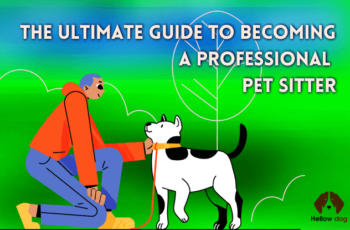Countless dog owners have stood amidst their once-perfect lawns, now transformed into terrain reminiscent of a mole’s playground, pondering the reason behind such vigorous digging. This behavior, though often frustrating, tells tales that span generations. This exploration dives deep into the historical, psychological, and behavioral aspects of the digging phenomenon while offering tangible solutions for contemporary dog owners.
A Tale of Muddy Paws: Charlie’s Endless Quest
Nestled within a neighborhood filled with the harmonious sounds of bird songs and children’s giggles, Charlie, a spirited Golden Retriever, made his home. Distinct from his peers who reveled in games of fetch or lazy sunbaths, Charlie exhibited an unyielding passion for a certain patch of the garden. This fixation seemed as though he was beckoned by whispers from a time long past.
As days evolved into weeks, the enigma of Charlie’s dedication stirred local chatter. Mrs. Turner, his doting owner, took it upon herself to partake in her pet’s relentless mission one day. Their collaborative endeavor led to the discovery of a buried time capsule—laden with black and white photographs, vintage toys, and heartfelt letters from children of an era gone by.
Historical Treasures & Modern Anecdotes
Beyond the heartwarming tale of Charlie, history is replete with similar narratives from various corners of the world. Bella, a Beagle from Georgia, unearthed a relic from the Civil War era during one of her digging escapades. Across the Atlantic in England, Max, a curious Labrador, stumbled upon a trove of ancient Roman coins. Each dig, every excavation effort by these canines, holds the promise of unlocking a chapter from the past, narrating tales hitherto unknown.
Why Dogs Dig: Delving Deeper into the Origins
Echoes from Ancestry: Before dogs were our pampered pets, they were wild creatures adapting to the ever-changing challenges of nature. Digging served multiple pivotal functions for these ancestral canines. Creating a burrow could offer a sheltered space, protecting them from extreme temperatures, both hot and cold. During blazing summer days, the soil beneath the surface is considerably cooler, offering a comfortable reprieve. Additionally, these burrows or dugout areas were also strategic spots for stashing food, ensuring a hidden cache for times when hunting was less fruitful.
Nature’s Playgrounds: Every dog owner knows the exhilaration their pet exhibits when presented with open ground. The earth’s surface is not just terrain for them—it’s a sensory wonderland. As kids find joy in molding sand in a sandbox, feeling its grains slip through their fingers, dogs relish the sensation of dirt and mud against their paws. This simple act can serve as both exploration and play, satisfying their innate curiosity and need for physical activity.
A Symphony of Senses: Beneath the seemingly mundane ground lies a world brimming with stories for our canines. Their sense of smell is estimated to be between 10,000 to 100,000 times more acute than ours. Couple this with their sharp hearing, and it’s clear why the underground world is so captivating. Worms wriggling just below the surface, the decomposing leaves enriching the soil, or the trail of a burrowing critter—all these weave intricate narratives that dogs are eager to explore and interact with.
Emotional Outlets: Just as humans have various ways of coping with emotions, dogs too have their methods. Digging can be a cathartic exercise, a way for them to process and navigate their feelings. It can be an outlet for pent-up energy, a method of self-soothing when anxious, or even a manifestation of joy. Understanding this can help dog owners realize that sometimes the digging is less about the act itself and more about the underlying emotional state.
Addressing the Digging Conundrum: Comprehensive Strategies for Responsible Pet Owners
Establish a Digging Zone: Every dog has an innate desire to dig, stemming from their wild ancestry. Instead of trying to suppress this behavior entirely, create a win-win situation. Designate a section of your garden—like a sandbox or a specific patch—as their digging playground. This allows them to indulge in their natural tendencies while keeping the rest of your garden intact. Over time, with consistent training, your dog will come to understand this as their exclusive excavation spot.
Mental Stimulation: A bored dog is often a digging dog. Keeping their minds engaged is paramount. Introduce them to interactive toys that challenge their problem-solving skills. Puzzle toys that dispense treats not only offer mental engagement but also provide a tasty reward, making them an appealing alternative to digging.
Supervised Garden Time: Much like children, dogs can benefit from supervised playtime. When you let them out in the garden, spend time with them. This allows you to intervene if they start digging in non-designated areas and to familiarize them gradually with which sections of the garden are off-limits for their digging escapades.
See also

Positive Reinforcement: Dogs thrive on praise and rewards. Instead of punishing them for digging in the wrong areas, adopt a positive reinforcement approach. Whenever your dog chooses their designated digging zone over other spots, reward them with treats, praises, or their favorite toy. This reinforcement establishes a positive association with the preferred digging area, making them more likely to choose it in the future.
Provide Alternatives: Sometimes, digging is just one of the manifestations of a dog’s need for physical activity or oral stimulation. Offer them a variety of toys, including chew toys, tug ropes, and squeaky toys. This assortment caters to their varying needs, be it the urge to gnaw, tug, or simply play, potentially diverting their attention from digging.
Education & Training: The world of canine behavior is vast and ever-evolving. By attending workshops, seminars, or even online courses about dog behavior and training, you arm yourself with knowledge. This foundation allows for effective communication with your pet, understanding their cues, and implementing training techniques that work best for both of you.
Unearthing the Bond: Appreciating Our Canine Companions
The digging habits of dogs transcend mere garden disruptions—they are rich narratives echoing their lineage, painting a vivid tapestry of ancient instincts, sensory discoveries, and profound emotions. At times, as with our dear Charlie, this instinctive act bridges the present to long-lost histories, unveiling treasures we might have never known.
Understanding and valuing our dogs necessitates a perspective shift. Recognizing these actions as illuminative glimpses into their rich inner lives rather than mere nuisances fosters a deeper understanding. By adopting an empathetic and informed stance towards their digging inclinations, we don’t merely manage their behavior—we cultivate a bond of understanding, respect, and profound affection with our ever-faithful companions. This bond illuminates the heartwarming tapestry of shared experiences, mutual respect, and endless love.


